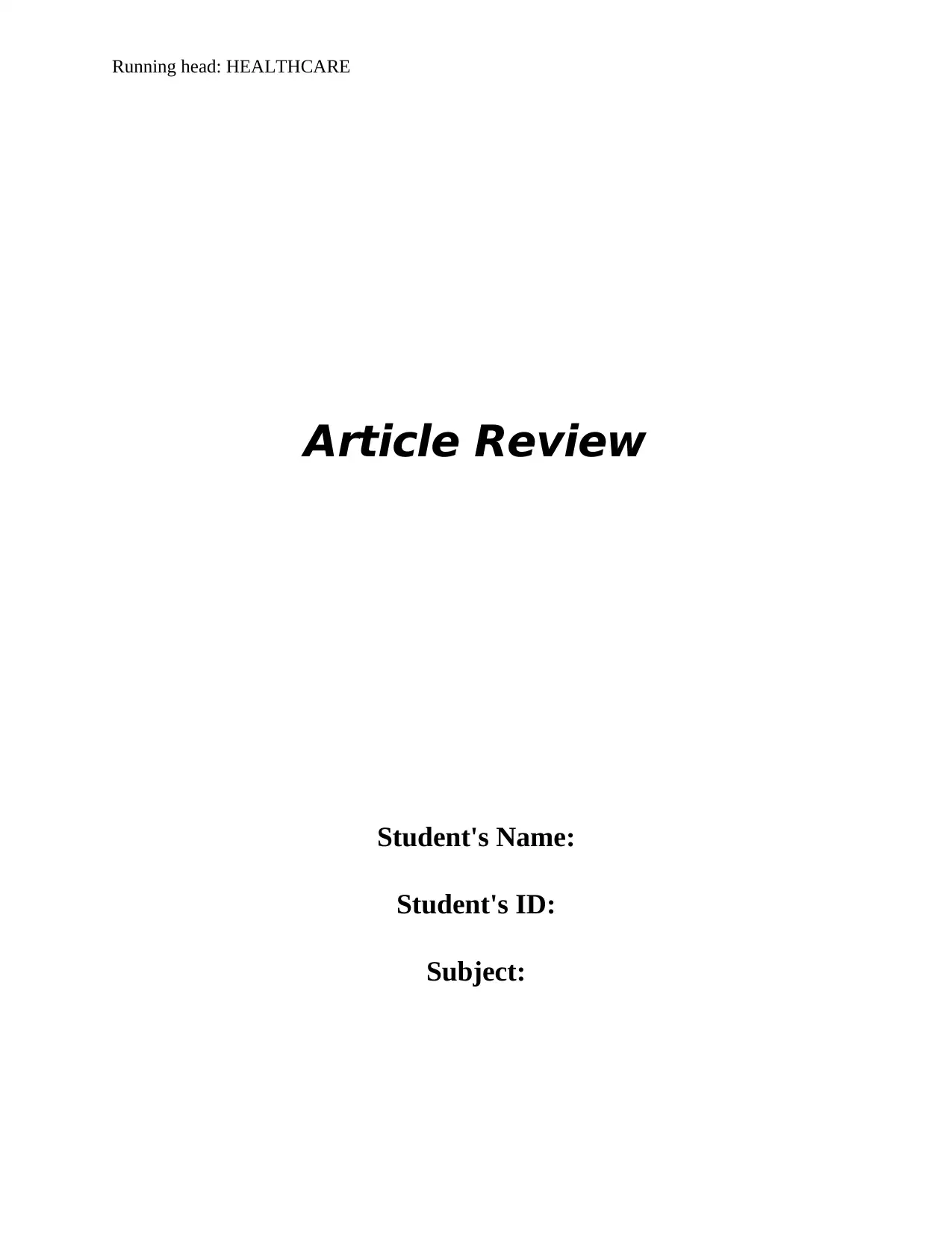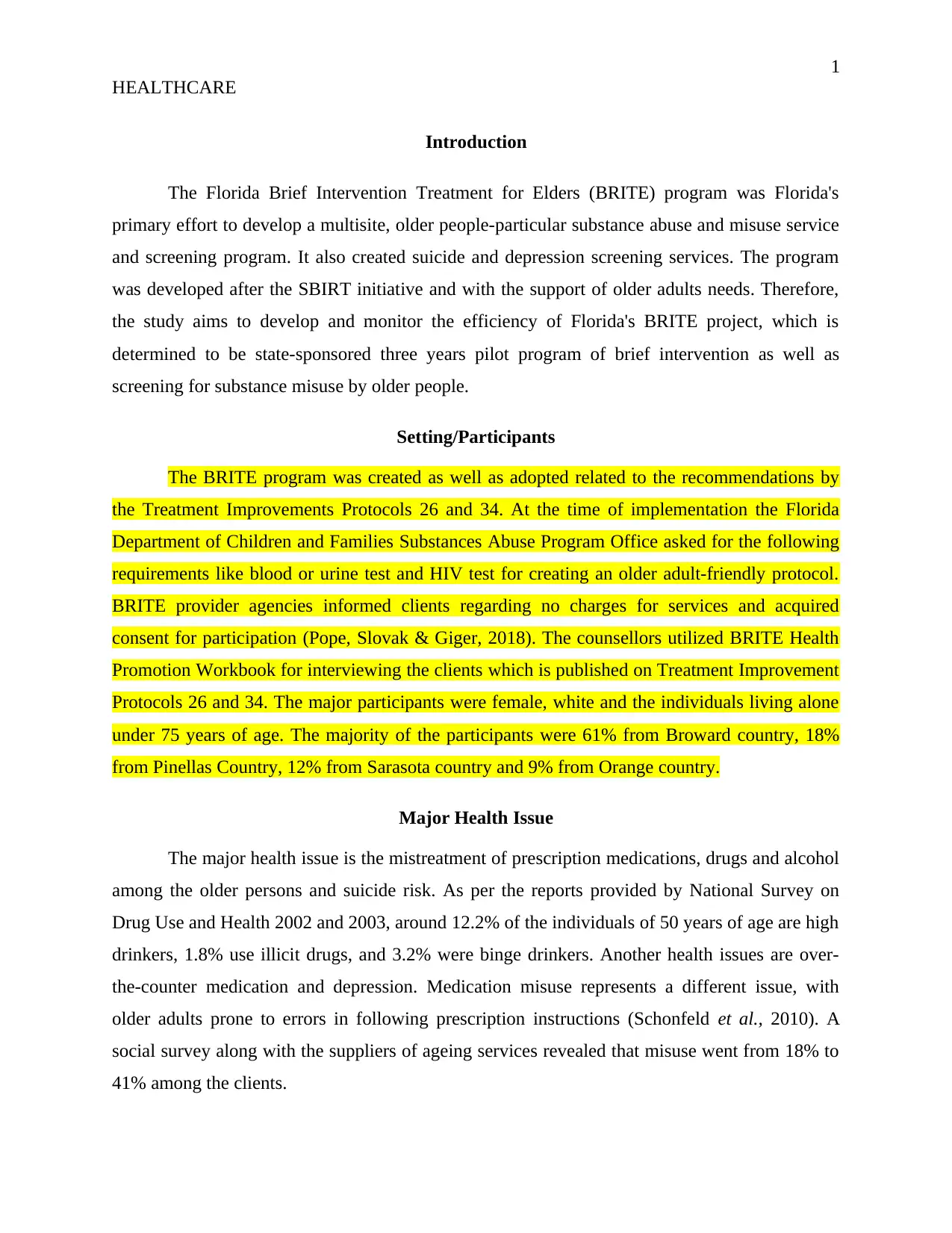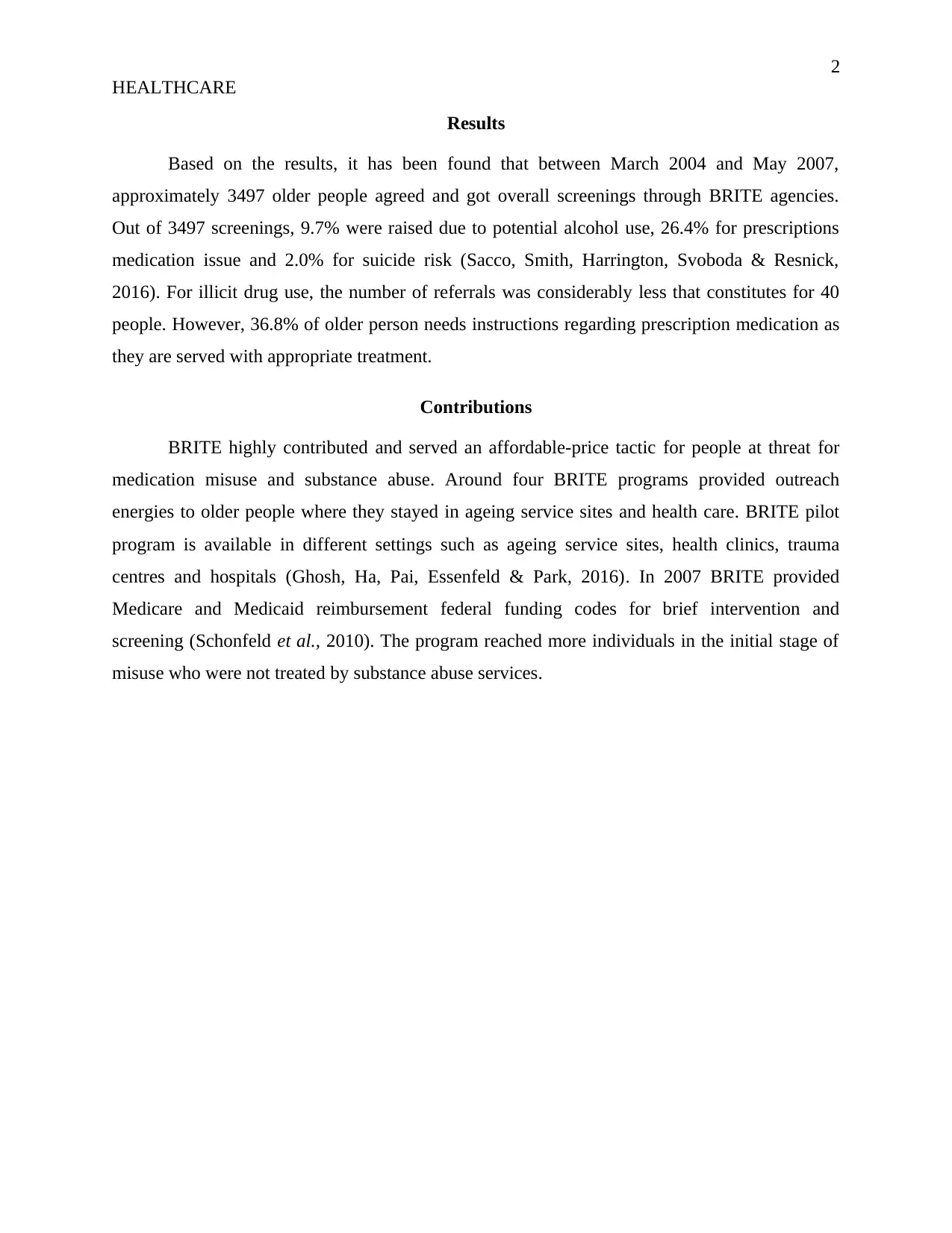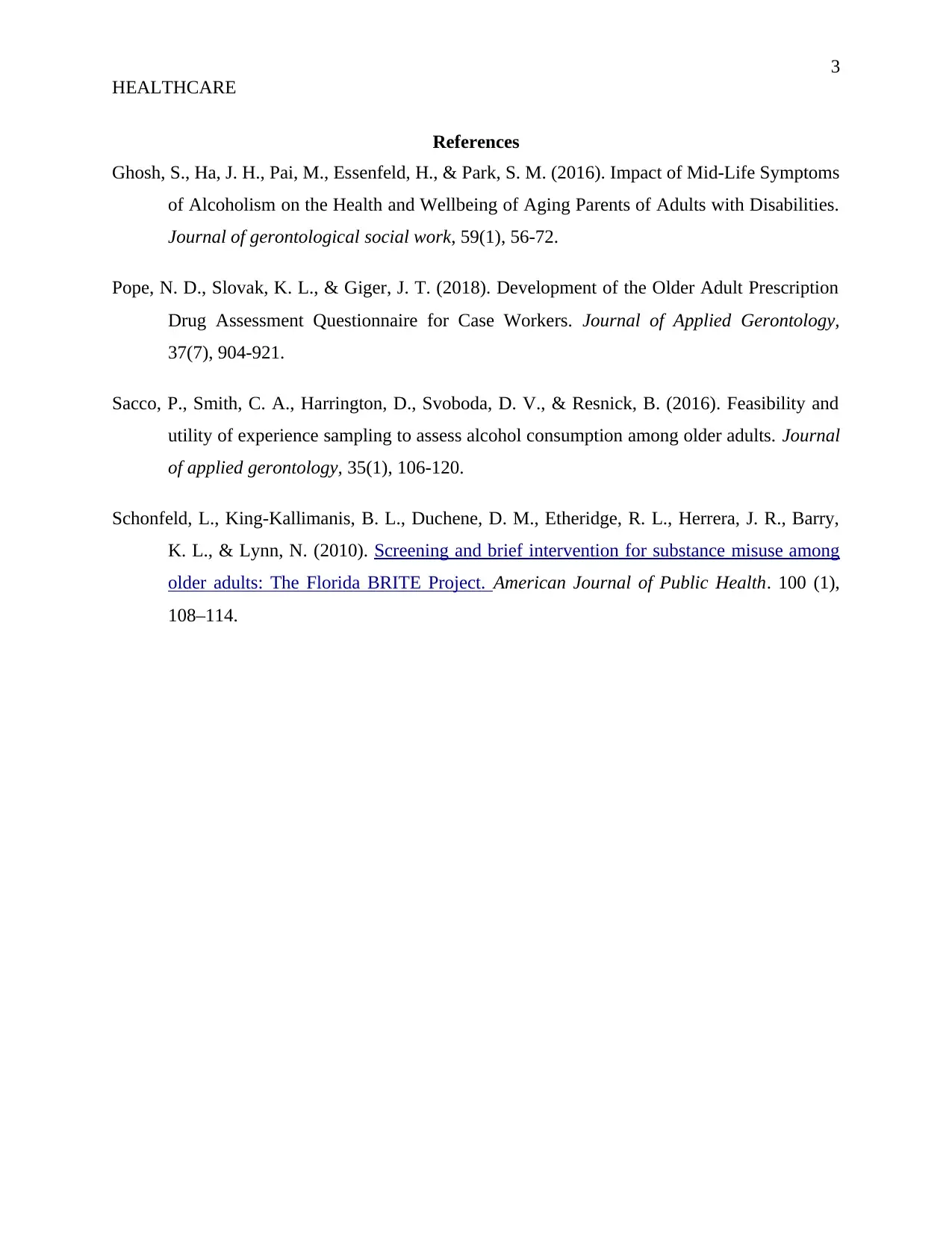Liberty University HLTH 380: Analysis of the Florida BRITE Program
VerifiedAdded on 2022/09/27
|4
|852
|26
Report
AI Summary
This report provides an in-depth analysis of the Florida BRITE (Brief Intervention Treatment for Elders) program, a state-sponsored initiative designed to address substance misuse, medication adherence issues, and suicide risk among older adults in Florida. The analysis covers the program's aims, which included screening and brief interventions for substance abuse and depression, along with the development of elder-friendly protocols. The report details the program's setting and participants, highlighting the demographics and locations involved. It also examines the major health issues targeted by BRITE, including the mistreatment of prescription medications, alcohol and illicit drug use, and depression. The report summarizes the program's results, including the number of screenings conducted and the prevalence of identified issues. Finally, it assesses the contributions of the BRITE program to health promotion planning for the elderly, emphasizing its role in providing affordable and accessible services and its outreach efforts within various healthcare settings. The analysis is based on the provided article and incorporates supporting research to provide a comprehensive overview of the BRITE program's impact and significance in the field of geriatric healthcare.
1 out of 4











![[object Object]](/_next/static/media/star-bottom.7253800d.svg)